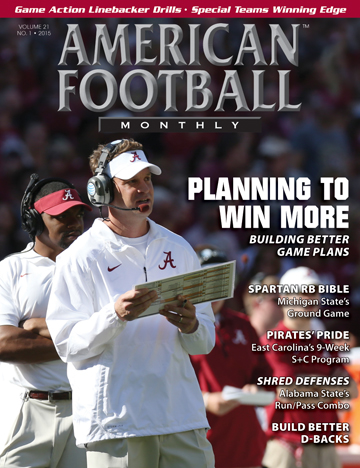Defensive Backs: Techniques, Fundamentals, Tips and Drills (Part II)
by: Randy AwreyHead Coach, Concordia University (Chicago)©
More from this issue
In the December issue of AFM, we discussed tips for defensive backs, basic techniques, backpedaling techniques, and how to change direction. In this issue, we will discuss knowing the interception point, stripping the receiver, playing the ball, playing the blocker on a run play, secondary run support and contain, coverage support and pursuit angles.
INTERCEPTION POINT
After your defensive backs recognize each pattern, they must learn where the ball will usually be caught by the receiver. This point is known as the “Interception Point.” It is usually a point six to eight yards in front of the receiver at the moment the DB recognizes the pattern. They should drive to the interception point. Diagram 1 shows a slant route and diagram 2 shows the interception point.
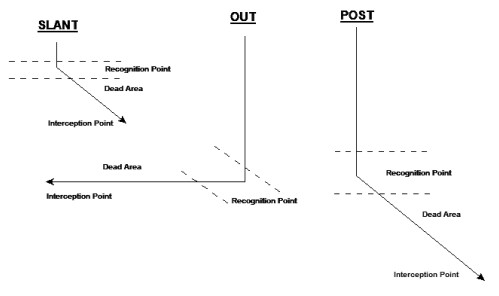
Diagram 1: Slant, Out and Post Routes
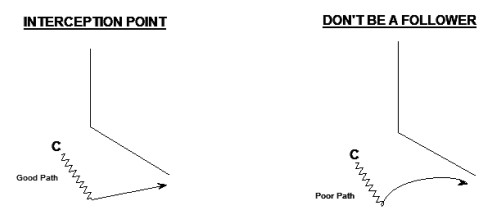
Diagram 2: Inteception Point
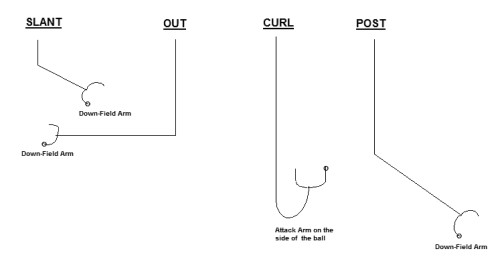
Diagram 3. Slant, Out, Curl and Post Routes
STRIPPING THE RECEIVER
1. If the WR is catching the ball and your DB can’t intercept, he should rip the downfield arm, which is the furthest from the ball and is the arm that stops the ball. We call that takeaway the backstop.
2. DB rips him with his downfield arm, grabs at the end of the elbow, and pulls down hard.
3. DB swings his other arm over the near arm and tries to jar the ball loose.
4. When covering the curl, DBs need to establish what side the ball is coming to and then rip that arm while hitting their opponent with their other ‘free’ arm to jar the ball loose. Diagram 3 shows which arm to use for a slant, out, curl and post routes.
PLAYING THE BALL
1. When DB drives, he shouldn’t look at the QB. He should drive to the interception point, not the receiver.
2. DBs shouldn’t cover the WR in a “Dead Area”. Rather, they should sprint to the interception point.
3. DBs should close cushion on receiver by accelerating, then look to the ball.
4. DBs should plant foot, lower hips, whip body and drive to the interception point – “Heel Click.”
5. DBs should turn and run when they lose the cushion… don’t get beat deep!
6. When a DB hears “BALL,” he should look to intercept. (If deep route, he should look at receiver’s hands and eyes, unless in-stride, where he should look for the ball).
7. DBs should collide with a receiver running an “Out and Up,” if he will beat them deep.
8. DBs should play through the WR to the ball.
9. DBs shouldn’t come underneath a WR unless they’re sure of getting both hands on the ball.
10. DBs should always knock the ball down with the inside arm. They should use the downfield arm to attack the “stop arm” of the receiver if they miss the ball with the inside arm.
11. DBs should intercept the ball at the highest point.
12. DBs should lock the ball into their hands and tuck it away.
13. DBs should return the ball by running to the nearest sideline.
PLAYING THE RUN -
PLAYING THE BLOCKER
1. DBs should get upfield and attack the blocker/ball carrier as quickly as possible. They should squeeze the play down from the outside-in.
2. DBs should use their hands and inside forearm/flipper to protect themself. If possible, they should try to overpower the blocker with brute force. If not, they should use leverage and quickness to defeat the blocker. (The contain by a cornerback or a safety is 2 x 2 yards outside-in on the blocker/ball carrier, whichever one attacks them first.)
3. DBs should keep the blocker from getting to their body and protect their legs.
4. DBs may “juke” a block but should not lose their leverage.
5. DBs should keep their outside arm and leg free. They should attack with their inside leg forward and their outside leg back – they should never get hooked or knocked down.
6. The best way for a safety to defeat a crack-back block scheme – as he approaches the LOS, drop his outside shoulder as the crack approaches and run through the crack. Cornerback must yell “CRACK” and support the outside-in through the receiver. BE SURE THE PLAY IS A RUN!
7. A wide receiver can threaten a DB on a running play by:
• A crack-back block.
• A stalk block.
• Running a deep pass route simulation.
Do not let your DBs allow any of these to eliminate them from the play.
SECONDARY RUN SUPPORT/
PURSUIT PATTERNS
We have an organized run support pattern to enable us to defend running plays and run passes. To play great run defense, the secondary must provide aggressive, hard hitting support vs. off-tackle and end runs and contain inside runs to hold them to minimum gains. The goal of a great secondary is to prevent long TD runs or passes. A good defensive secondary should never allow a long TD run, since the only ingredients needed to stop a long run are proper rotation, good tackling and hustle.
PRIMARY CONTAIN
This is the responsibility of meeting the end run in its formative stages and making the tackle, forcing the cutback or forcing the ball carrier so deep that he is vulnerable to pursuit.
1. DBs should limit the running lane - keep the cutback area small. DBs should meet and defeat the lead blocker before he can turn the corner.
2. They should not make a one-for-one trade; that is, themself for the blocker. They must alter the course of the RB.
SECONDARY CONTAIN
This is the responsibility for defending the play-action pass and the run pass. After eliminating all such threats, DBs support outside-in.
CUTBACK
This is an area of varying width depending on the type of support and reaction of the primary support man. It is the area between the primary support man and the first inside pursuit lineman. It is normally the third man in your support pattern. DBs need to recognize the difference between the sweep and the off-tackle play. They should be in a position to play the cutback, and hold that position. They need to control any blocker that attacks them, but not allow this control effort to take them out of the cutback area.
SKY COVERAGE SUPPORT AND PURSUIT ANGLES
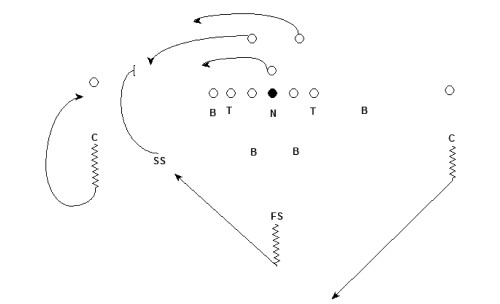
Diagram 4: Sky Coverage Support and Pursuit Angles
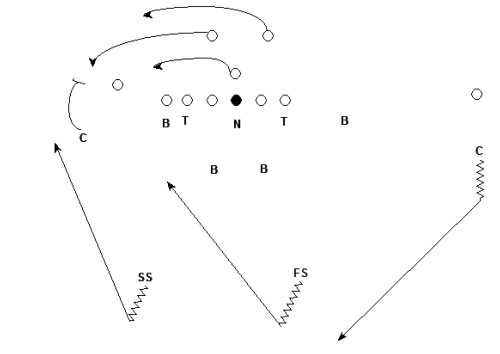
Diagram 5: Club Support
SKY SUPPORT
1. Strong Safety is the primary contact with a front outside-in position.
• SS should support the play upon recognition of a run through the TE at the point of attack, which is three yards outside and two yards deep from the original alignment of your end.
• If SS is getting “cracked” and can’t beat it, he should shed the blocker in front of him.
2. Strong corner in the secondary contains from outside-in.
• Corner should backpedal until run is established before coming to contain.
• Contain all opponents to his inside and never take an inside fake. Corner should give ground if necessary to make the tackle.
• Corner yells “CRACK” on any crack-back threat. If safety gets knocked down, he becomes the primary contain.
3. Free Safety - Cuts back inside-out on football. Reads delayed release of the TE (HB pass).
4. Weak Corner - Plays reverse, cut backs and deep pursuit (saving tackle).
About the Author: Randy Awrey just completed his second season as head coach at Concordia University in Chicago. A four-year starter at Northern Michigan, he became a head coach in 1990 at Kentucky Wesleyan University. Awrey then became head coach at Lakeland College and later at Saginaw Valley State. He then went on to become defensive coordinator at Northern Michigan and held the same position at Marietta College before becoming the head coach at Concordia.
